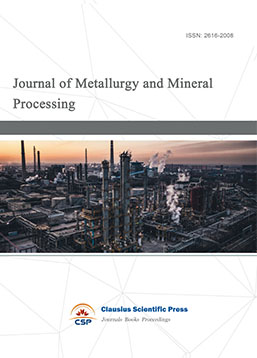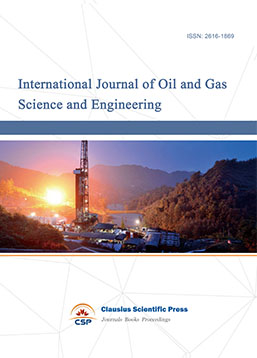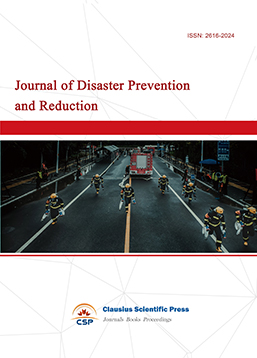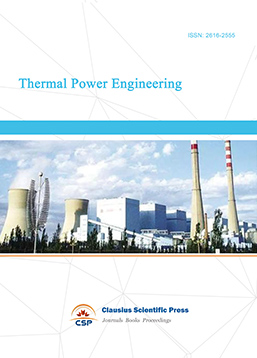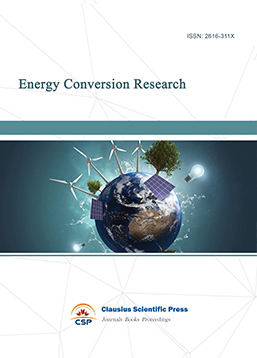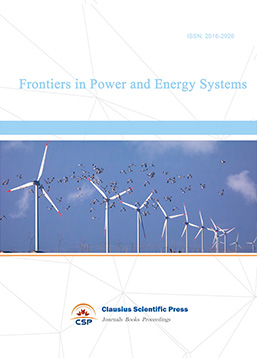Hydrogen Energy Application of an Intelligent Active Dry-hydrogen Light-mixing System under a Carbon Neutralization Background
DOI: 10.23977/ssge.2024.060105 | Downloads: 35 | Views: 1647
Author(s)
Kunqin Cheng 1, Lujia Ye 1, Qile Chen 2, Jialiang Pan 1
Affiliation(s)
1 School of Business and Management, Jiaxing Nanhu University, Jiaxing, China
2 School of Mechanical and Electrical Engineering, Jiaxing Nanhu University, Jiaxing, China
Corresponding Author
Jialiang PanABSTRACT
With the worsening of global climate change, carbon neutrality has become the common goal of all countries. Hydrogen energy, as a clean and efficient energy source, plays an important role in the carbon neutralization process. In this paper, the application of an intelligent active dry-hydrogen light-mixing system in the field of transportation was studied by comparing and analyzing the technical routes of the hydrogen energy industry and combining them with the key technologies in the field of hydrogen energy application. The technical principle and working process of the intelligent active dry-hydrogen light-mixing system were established, and the economic and social benefits of the intelligent active dry-hydrogen light-mixing system were analyzed by taking Aneng Company (China) as an example. The application of an intelligent active dry-hydrogen light-mixing system in the field of transportation was examined.
KEYWORDS
Carbon Neutralization, Intelligent Active Dry-Hydrogen Light-Mixing System, Hydrogen Energy ApplicationCITE THIS PAPER
Kunqin Cheng, Lujia Ye, Qile Chen, Jialiang Pan, Hydrogen Energy Application of an Intelligent Active Dry-hydrogen Light-mixing System under a Carbon Neutralization Background. Smart Systems and Green Energy (2024) Vol. 6: 32-40. DOI: http://dx.doi.org/10.23977/ssge.2024.060105.
REFERENCES
[1] Wogu, I. A., Njie, S. N., Ezennwa, E. O., Chukwuedo, C. N., Ukagba, G. U., Misra, S., Uniamikogbo, E., & Olu-Owolabi, E. F. (2021). The Politics of Climate Change and the Rising Demand for Global Energy in the 21st Century: Implications for Human and Economic Development. International Journal of Energy Optimization and Engineering (IJEOE), 10(3), 1-23.
[2] Xu, X., Gou, X., Zhang, W., Zhao, Y., & Xu, Z. (2023). A bibliometric analysis of carbon neutrality: Research hotspots and future directions. Heliyon, 9(8), e18763.
[3] Li, Y., Dong, H. & Lu, S. (2021).Research on application of a hybrid heuristic algorithm in transportation carbon emission. Environ Sci Pollut Res 28, 48610–48627.
[4] Boretti, A. & Banik, B.K. (2021), Advances in Hydrogen Production from Natural Gas Reforming. Adv. Energy Sustainability Res., 2: 2100097.
[5] Giaconia, A., Iaquaniello, G., Morico, B., Salladini, A., &Palo, E(2021). Techno-economic assessment of solar steam reforming of methane in a membrane reactor using molten salts as heat transfer fluid, International Journal of Hydrogen Energy, (46)71, 35172-35188.
[6] Liu, X.L. (2016). Comparison of hydrogen production technology. Contemporary chemical research,(05), 78-79.
[7] Song, H., Lin, G., Rui ,D., & Sheng ,L.(2022).A novel hydrogen production system based on the three-step coal gasification technology thermally coupled with the chemical looping combustion process. International Journal of Hydrogen Energy, 47(11), 7100-7112.
[8] S. Shiva Kumar&Lim, H.(2022). An overview of water electrolysis technologies for green hydrogen production. Energy Reports, (08), 13793-13813.
[9] Zhao, G., Ding, J., Ren, J., Zhao, Q., Fan, H., Wang, K., Gao, Q., Chen, X.,& Long, M.(2022).Treasuring industrial sulfur by-products: A review on add-value to reductive sulfide and sulfite for contaminant removal and hydrogen production.Journal of Hazardous Materials, (438),129462.
[10] Acar, C., & Dincer, L. (2022). Selection criteria and ranking for sustainable hydrogen production options. International Journal of Hydrogen Energy, (47)95, 40118-40137.
[11] Maroušek, J.(2022). Review: Nanoparticles can change (bio) hydrogen competitiveness.Fuel, (328), 125318.
[12] Arun, J, Sasipraba, T., Gopinath, K. P., Priyadharsini, P., Nachiappan, S., Nirmala, N., Dawn, S. S. , Chi, N.T.L.,& Pugazhendhi, A. (2022). Influence of biomass and nanoadditives in dark fermentation for enriched bio-hydrogen production: A detailed mechanistic review on pathway and commercialization challenges. Fuel, (327), 125112.
[13] Pal, D. B., Singh, A., & Bhatnagar, A. (2022) A review on biomass based hydrogen production technologies. International Journal of Hydrogen Energy, (47) 3, 1461-1480.
[14] Zhou, S.H. ,Wang, X.L. ,Duan, P.J. ,Zhang, Y. ,Sui, Y.Y. ,&Lu, L.(2023).Analysis of technical situation of high pressure gaseous hydrogen storage.Energy storage science and technology,(08), 2668-2679.
[15] Ahmed, M. R., Barua, T.,& Das, B. K. (2023) A comprehensive review on techno-environmental analysis of state-of-the-art production and storage of hydrogen energy: challenges and way forward, Energy Sources, Part A: Recovery, Utilization, and Environmental Effects, 45:2, 5905-5937.
[16] Tarhan, C., & Çil, M. A. (2021)A study on hydrogen, the clean energy of the future: Hydrogen storage methods, Journal of Energy Storage,40,102676.
[17] Rivard, E., Trudeau, M., & Zaghib, K.(2019) Hydrogen Storage for Mobility: A Review, Materials 2019, 12(12), 1973.
[18] Lipiäinen, S. , Lipiäinen, K. , Ahola, A.,& Vakkilainen, E.(2023). Use of existing gas infrastructure in European hydrogen economy. International Journal of Hydrogen Energy, (48)80, 31317-31329.
[19] Niermann, M., Timmerberg, S., Drünert, S., & Kaltschmitt, M. (2021) Liquid Organic Hydrogen Carriers and alternatives for international transport of renewable hydrogen. Renewable and Sustainable Energy Reviews, (135), 110171.
[20] Raab, M., Maier, S., & Dietrich, RU.(2021)Comparative techno-economic assessment of a large-scale hydrogen transport via liquid transport media. International Journal of Hydrogen Energy, (46)21, 11956-11968.
[21] Zou, C. N., Li, J. M., Zhang, X., Jin, X.,Xiong, B., Yu, H.D., Liu, X.D., Wang, S. Y., Li, Y. H., Zhang, L., Miao, S., Zheng, D. W., Zhou, H. J. , Song, J. N. , &Pan, S. Q.(2022).Industrial status, technological progress, challenges, and prospects of hydrogen energy. Natural Gas Industry B, (9)5,427-447.
[22] Stępień, Z. (2021) A Comprehensive Overview of Hydrogen-Fueled Internal Combustion Engines: Achievements and Future Challenges, Energies 2021, 14(20), 6504.
[23] Felseghi, R.-A., Carcadea, E., Raboaca, M.S., TRUFIN, C.N., & Filote, C.(2019) Hydrogen Fuel Cell Technology for the Sustainable Future of Stationary Applications, Energies 2019, 12, 4593.
[24] Pagliaro, M., & Iulianelli, A. (2020) Hydrogen Refueling Stations: Safety and Sustainability, General Chemistry, 6, 190029.
[25] Kerkal, G., Pawale, K., & Dhumal, A. (2017). Diesel Engine with Hydrogen in Dual Fuel Mode: A Review. Int. J. Eng. Technol. Manag. Appl. Sci, 5, 1306-1311.
[26] Simi, A. (2011). Hydrogen Direct Injection in Reciprocating Engines Using Commercial Injectors (Doctoral dissertation, PhD Dissertation).
[27] Das, L.M. (2016)7 - Hydrogen-fueled internal combustion engines, Compendium of Hydrogen Energy, 3, 177-217.
[28] Wróbel, K., Wróbel, J., Tokarz, W., Lach, J., Podsadni, K., & Czerwiński, A. (2022) Hydrogen Internal Combustion Engine Vehicles: A Review, Energies 2022, 15, 8937.
[29] Li, J. Q. , Li, J. C. , Wang, X. Y. , Xu, H. , & Kwon, J. T. (2023). A theoretical study on the hydrogen filling process of the on-board storage cylinder in hydrogen refueling station. Results in Engineering, (18), 101168.
[30] Xu, L.B.(2022). Research on the utilization prospect and development strategy of hydrogen energy in China. Clean coal technology, (09), 1-10.
| Downloads: | 1333 |
|---|---|
| Visits: | 86846 |
Sponsors, Associates, and Links

 Download as PDF
Download as PDF